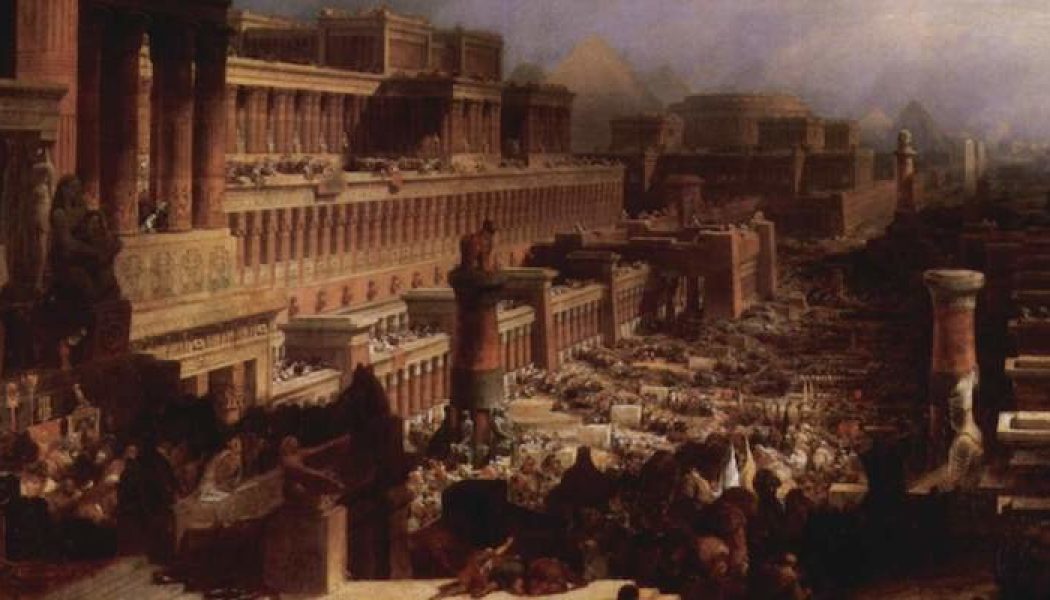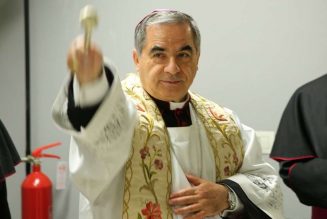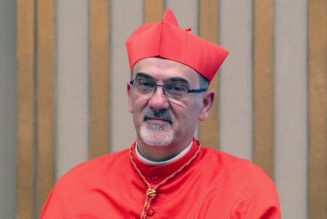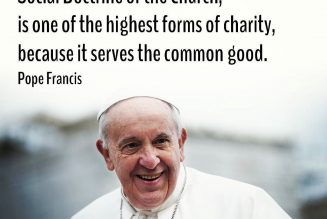
Easter is the Christian Passover. This is not immediately evident. Easter celebrates the resurrection of Jesus, a moment of metaphysical triumph over sin and death. The Jewish celebration of Passover recalls the liberation of the Israelites from their Egyptian captivity, a historical-political event. But in truth they run along the same lines. For God’s deliverance of his people from the dominion of Pharaoh is a raising of Israel from the dead.
Most Christians assume that the Passover concerns Exodus 12, which commands the Israelites to sacrifice a spotless lamb and smear its blood on the door lintels as a sign for the angel of death to “pass over” the household. This merges in the Christian imagination with Leviticus 16 and the scapegoat upon whose head are heaped all the iniquities of men. Christ is the holy victim, the full, perfect, and sufficient sacrifice of atonement, and in his blood we are cleansed. Passover, by this way of thinking, is linked to Good Friday, not Easter.
But this assumption is mistaken. Although the name and date of Passover come from Exodus 12, the Passover Seder arises from Deuteronomy 5:15. The context is a restatement of the Ten Commandments. Embedded in the commandment to observe the Sabbath is a particular commandment: “You shall remember that you were a slave in the land of Egypt, and the LORD your God brought you out with a mighty hand and an outstretched arm.” This establishes the Jews’ duty to remember and retell the story (haggadah) of the Exodus.
Interestingly, the part of the Seder liturgy dedicated to this retelling (the Haggadah) does not actually retell the story of Exodus (an irony much commented upon at Seders, at least those I’ve attended). Instead, the skeleton of the Haggadah, the story told to fulfill the command in Deuteronomy 5:15, comes from Deuteronomy 26:5–8.
This short passage opens with an evocation of Abraham, whose descendants “went down” into Egypt. The Seder then adverts to the threat of death, for Pharaoh sought the destruction of Israelite males. But Laban, the Haggadah says (repeating a rabbinic midrash on Deuteronomy 26:5 that runs against the literal sense and along different lines than the Genesis account) “wanted to uproot everyone.” Laban, on this telling, sought Jacob’s destruction and thus the extinction of the Jewish people.
One can see what the rabbis are doing here. In Genesis 12, Abraham receives a promise of life abundant—land, prosperity, and countless progeny. But the fulfillment of the promise is imperiled at every step, first by Sarah’s barren womb, then by Hagar’s presumption, and then, most poignantly, on Mount Moriah. The promise of life abundant is threatened with extinction by the potentially murderous rivalry between Jacob and Esau. Thus, the Haggadah’s retelling of Exodus evokes a horizon of peril. The danger is not just physical extermination, but the terrible prospect that God’s promise to Abraham might come to a futile dead end.
Although there is no language of atonement in the Haggadah, it is not that difficult to see the Passion of Christ in this Jewish liturgical framing. After recalling the ominous threat of Laban and extinction, the Seder emphasizes the mistreatment and torment suffered by the Israelites in Egyptian slavery. This is punctuated by a sequence of refrains: “And we cried out.” Christ suffers mistreatment and torment, and he, too, cries out in the Garden of Gethsemane and on the Cross.
Here, the Passover Seder sheds light on Good Friday. Jesus is not just an innocent man on his way to physical extermination. The entire Messianic project and its promise to inaugurate the Kingdom of God seem to come to a dead end in a Laban-like mania for extinction. The disciples have scattered. Jesus’s followers face a daunting prospect. What he promised in his ministry has been overridden by evil powers. Only agonies and torments seem to lie ahead for human beings, culminating in death, a yawning abyss of nothingness.
But this is not the final word. The brief verses from Deuteronomy 26 pivot from affliction, bondage, and cries from the bottom of the pit of destruction to the divine response. “The LORD brought us out of Egypt with a mighty hand and an outstretched arm, with great terror, with signs and wonders.” The Haggadah dwells on God’s mighty hand. Who was it who rescued us, the Seder asks? Not an angel or viceroy, but the Almighty himself.
The Seder gives a great deal of space to the signs and wonders that manifest God’s power. (This section is where the enthusiasm of many during the Seder begins to flag.) The Haggadah urges an unrestrained celebration of the ten plagues, which culminate in the death of the firstborn. Many find this troubling. But in the context of the Haggadah (and in the text of Exodus), the hard-heartedness of Pharaoh functions like the felix culpa, the “happy fault” of the Easter Exsultet. The Egyptian tyrant’s recalcitrant rebellion against God intensifies the divine response, raising it to the highest pitch. At this point in the Haggadah there is an amusing rabbinic debate that ends up counting 250 plagues rather than just ten. This seemingly absurd digression has a serious point. It evokes the fact that the Passover celebrates God’s infinite power—power beyond counting—over those who imagine, like Pharaoh, that death has the final word.
And so it is on Good Friday. The death of the Beloved Son raises the Father’s love to the highest pitch. He, too, will act with his mighty hand and his outstretched arm. The gates of hell will be battered down and death will be destroyed. And on Easter morning, the Messiah will be raised from the dead.
The Haggadah proper (the Seder continues) ends with praise. “Blessed are you our God, King of the Universe, who redeemed us and our ancestors from Egypt and brought us to the enjoyment of this night, to eat matzoh and bitter herbs.” To Christian ears this can sound like a letdown. The culmination of the resurrection of Israel from the dead is the enjoyment of a ritual meal on the 14th day of Nissan? But this misjudges. For to enjoy the festive meal in precisely that way means doing what God commanded in Deuteronomy 5:15. And to do the will of the Eternal One is to enter, in a real if only partial way, into eternal life. Put simply, God raised the Israelites from their deathbeds in Egypt so that he could give them the Torah, which is the Way of Life. That’s why in Deuteronomy Moses repeats a singular imperative: “Choose life!”
On Easter, we should allow ourselves to be instructed by the Passover Haggadah. The triumph of life in Christ is not remote. It is not hidden away in heaven. The mighty hand and outstretched arm of our Redeemer is available here and now. We can taste and savor eternal life every time we gather and do as he commanded. That happens when, in the spirit of Deuteronomy 5:15, we consecrate and share bread and wine “in remembrance of me.”
R. R. Reno is editor of First Things.








